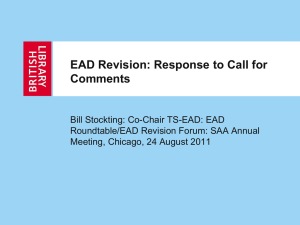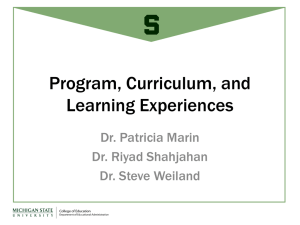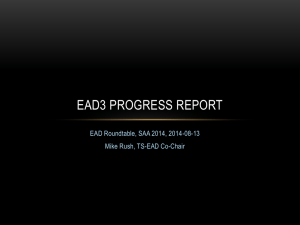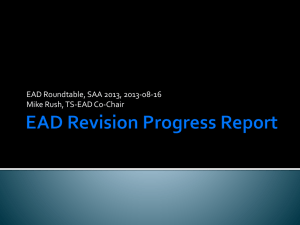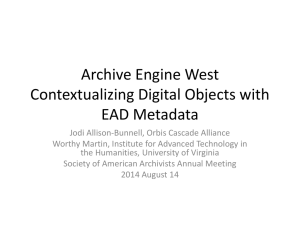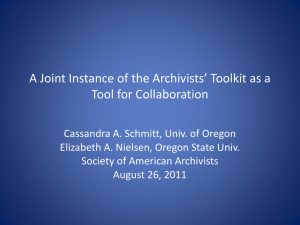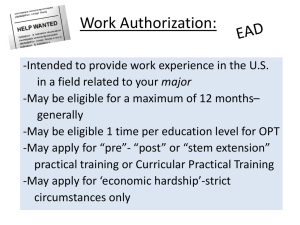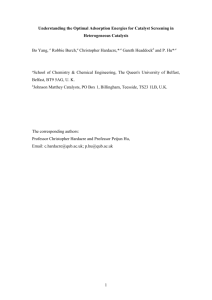EAD
advertisement
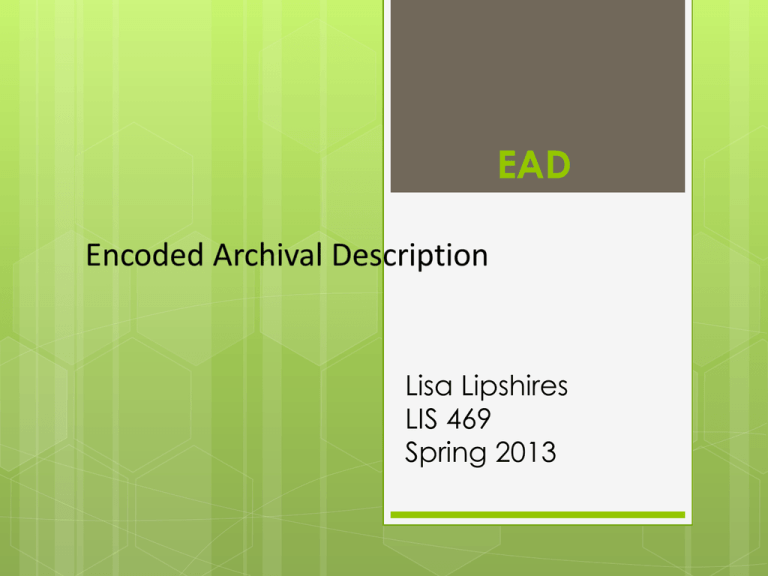
EAD Lisa Lipshires LIS 469 Spring 2013 What is EAD? EAD, or Encoded Archival Description, is an XML standard for encoding finding aids-guides to archival materials. Like other instances of XML, EAD-encoded finding aids are both machine and human readable. This dual readability allows finding aids to be more easily understood, shared, and searched online. History of EAD Created by U.S. archivists, led by Daniel Pitti at UC Berkeley, EAD initially based on SGML; XML-compatible version released in 1998. EAD is maintained and updated jointly by the Society of American Archivists and the Library of Congress. A new version of EAD will be released by January, 2014. Kelcy is a member of the Technical Subcommittee that is working on the revision. Structure of EAD Overview Nested structure of EAD mirrors organization of archival materials—larger units contain nested subunits. The 2002 EAD DTD allows, with the <c> “container” element, unlimited repetition of subunits at different levels of the hierarchy. The element <c> is flexible in that it can be used for archival units of different sizes, such as Series (large) and files (small). There are 146 elements in the EAD Tag Library, but only 9 of them are required. 9 Required Elements Inside 2 Main Sections 1. <ead> 2. <eadheader> metadata about the finding aid 3. <eadid> [unique code for finding aid document] </eadid> 4. <filedesc> wrapper element for titlestmt 5. <titlestmt> wrapper element for title and author of finding aid 6. <titleproper> [the title of the finding aid] </titleproper> </titlestmt> </filedesc> </eadheader> 7. <archdesc level=“collection”> wrapper for archival description; level is a required attribute. 8. <did> [ ] </did> wrapper element for basic description of archival unit. When child of <archdesc>, <did> contains description of highest level of hierarchy. 9. <dsc type=“combined”>[ ] </dsc> wrapper element for subordinate components of hierarchy. <dsc> not required, but type attribute is required, if <dsc> is used. </archdesc> </ead> My EAD Internship At Connecticut State Archives this semester. Surveyed and described the records of the General Federation of Women’s Clubs of CT. Encoded finding aid in EAD. Used NoteTab Pro for encoding. Validated finding aid against the 2002 EAD DTD. Here is what the finding aid looks like in HTML and in XML. Encoding Environment In NoteTab Pro, the CT State Archives installed the EAD 2002 Cookbook, a set of software tools for implementing EAD, and tweaked the XSLT stylesheets that came with the Cookbook. The CT State Archives also installed Saxon, an open source transformation engine, to produce HTML from the EAD. NoteTab: Pros and Cons Unlike oXygen, NoteTab Pro will not tell you right away that the code you have typed is invalid. You have to click on “parse and validate” to find out. The Archives chose NoteTab Pro over oXygen because it is much less expensive-around $35 per license, rather than around $500 per license, for oXygen. EAD Cookbook Includes modular finding aid components that can be selected and customized. Provides middle ground between encoding finding aids by hand and generating EAD with data management systems, such as the Archivists’ Toolkit. This is what the NoteTab Pro interface, with the EAD Cookbook installed, looked like on my computer at the CT State Archives. Encoding Challenges Greatest challenge of my internship was to make the finding aid accurately reflect the sometimes quirky organization of the records, without confusing users. Archivists are not supposed to rearrange records to make them easier to understand; records should be kept in the order and groupings that creators made. Dilemma Eight folders in one box were titled by the creators with the years of their contents, but the folders’ inclusive dates would already be listed in the finding aid. Using the actual titles of these folders would have meant that finding aid users would have seen double dates, and no words, for each of the folders. Solution Created by Supervisor, Allen Ramsey Group the folders under one title, Documents. <c03 level="file"> <did> <container type="Box">8</container> <unittitle>Documents</unittitle> <unitdate type="inclusive" normal="1897/1906">18971906</unitdate> <physdesc><extent>8 folders</extent></physdesc> </did> <note><p>Folders are arranged by years. Documents include correspondence and reports related to the founding of the Connecticut State Federation of Women's Clubs, committee reports, programs, speeches, correspondence, and calls to conventions.</p></note> </c03> Solution in HTML Output
